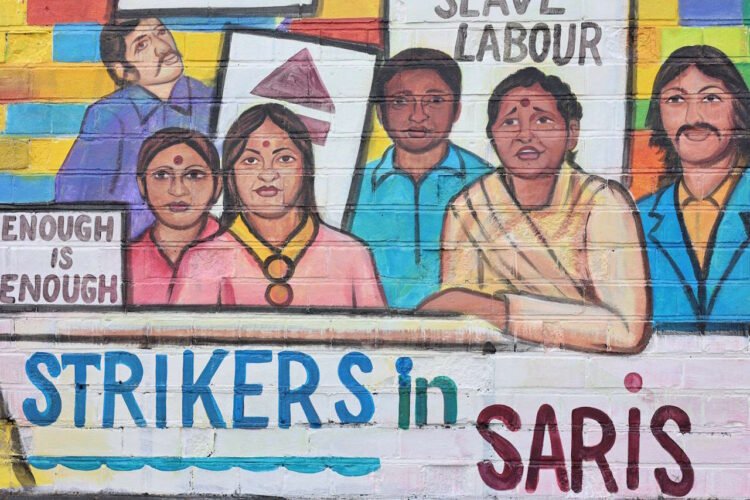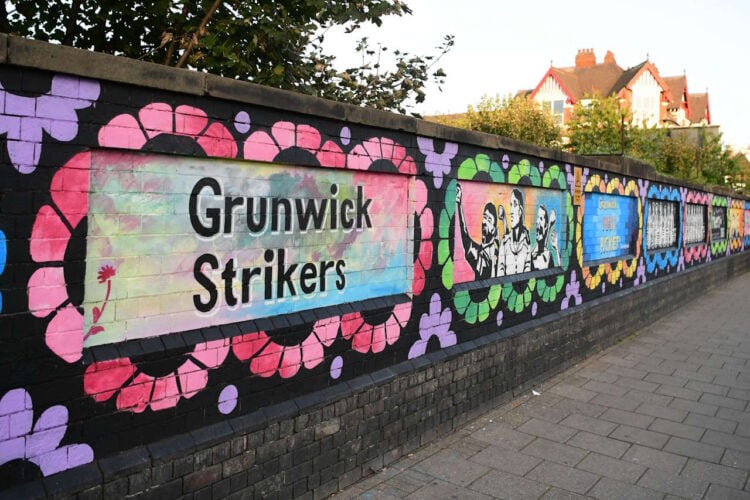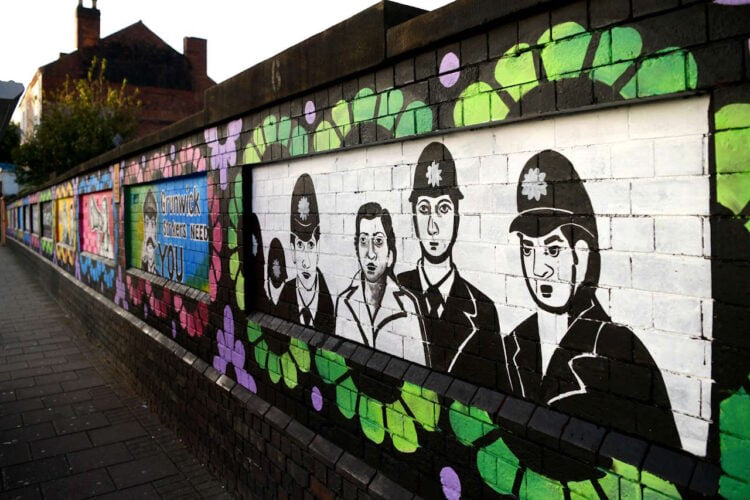A railway bridge in Birmingham has been decorated with a hand-painted mural to commemorate South Asian immigrants who fought for equal working conditions 45 years ago.
The mural was unveiled on Tuesday, 10 October, with the cutting of a ribbon to mark the completion of the colourfully painted bridge parapets. Its prominent position means that it will be seen by thousands of road users and pedestrians every day as it commemorates a dispute that started in 1977 at the Grunwick film processing laboratory in London.

That dispute spread and was soon joined by people experiencing similar working conditions throughout the country, including South Asian immigrants working in the West Midlands.
Network Rail and British Asian magazine DESIblitz spent months planning and designing the mural, which appears on both sides of the Soho Road bridge in the Birmingham suburb of Handsworth.

The dispute at Grunwick was led by women workers who at the time were known as the ‘Strikers in Saris’, and the mural has brilliantly coloured panels that depict scenes from the dispute.
Many of the women came from Africa, India, and Pakistan, often leaving behind secretarial and well-earning skilled positions, but discrimination in the employment market in Britain often saw them being offered only factory jobs. At that time, it was common for immigrant workers t suffer poor pay, exploitation, and workplace intimidation, so the South Asian workforce including those in Birmingham made a stand.

Standing together they created their own trade union, organised strikes, and mobilised people to travel to London to protest for better workers’ rights. These protests come out in mural as it shows that story of determination and the progress that followed, and illustrates the positive impact made in Britain since then by the Indian and Pakistani population.
Renowned artist Haider Ali who comes from Karachi in Pakistan took five weeks to paint the mural by hand, in the distinctive “truck art” style for which he has become famous worldwide.
Before the bridge was painted, Network Rail structural teams checked the bridge to make sure it was suitable for the artwork. The painting of the murals was carried out in accordance with all the relevant regulations and was planned so that there was no disruption to passengers below.
This is not the first time that Network Rail has been involved in having murals painted on its bridges, as some railway bridges at Vauxhall in south London have been decorated and a Hollywood artist has produced a mural for Millwall Football Club thanks to Network Rail.
Network Rail is always pleased to hear from other communities who have ideas for similar projects, and details can be found at https://www.networkrail.co.uk/communities/
Indi Deol, from DESIblitz, said: “Our mural, created in collaboration with Network Rail, pays homage to the Grunwick Dispute, a testament to the resilience and unity of the Strikers in Saris and the local community.
“It tells the story of strength, unity, and determination, capturing the spirit of the Indian Workers Association which arranged coaches from Birmingham to London. Organised by DESIblitz and brought to life by the talented truck artist Haider Ali over five weeks, this mural stands as a lasting tribute to those who fought for justice.”
Steven Ireland, from Network Rail, said: “It’s been an honour for us to work with DESIblitz to transform our railway bridge into an impressive piece of art which reflects such a turning point for South Asian workers’ rights in Britain.
“Not only does it provide a new focal point for Handsworth, but we also hope it’ll inspire people to learn more about how immigrants settling in this part of Birmingham stood together to fight for fairness.”






Responses